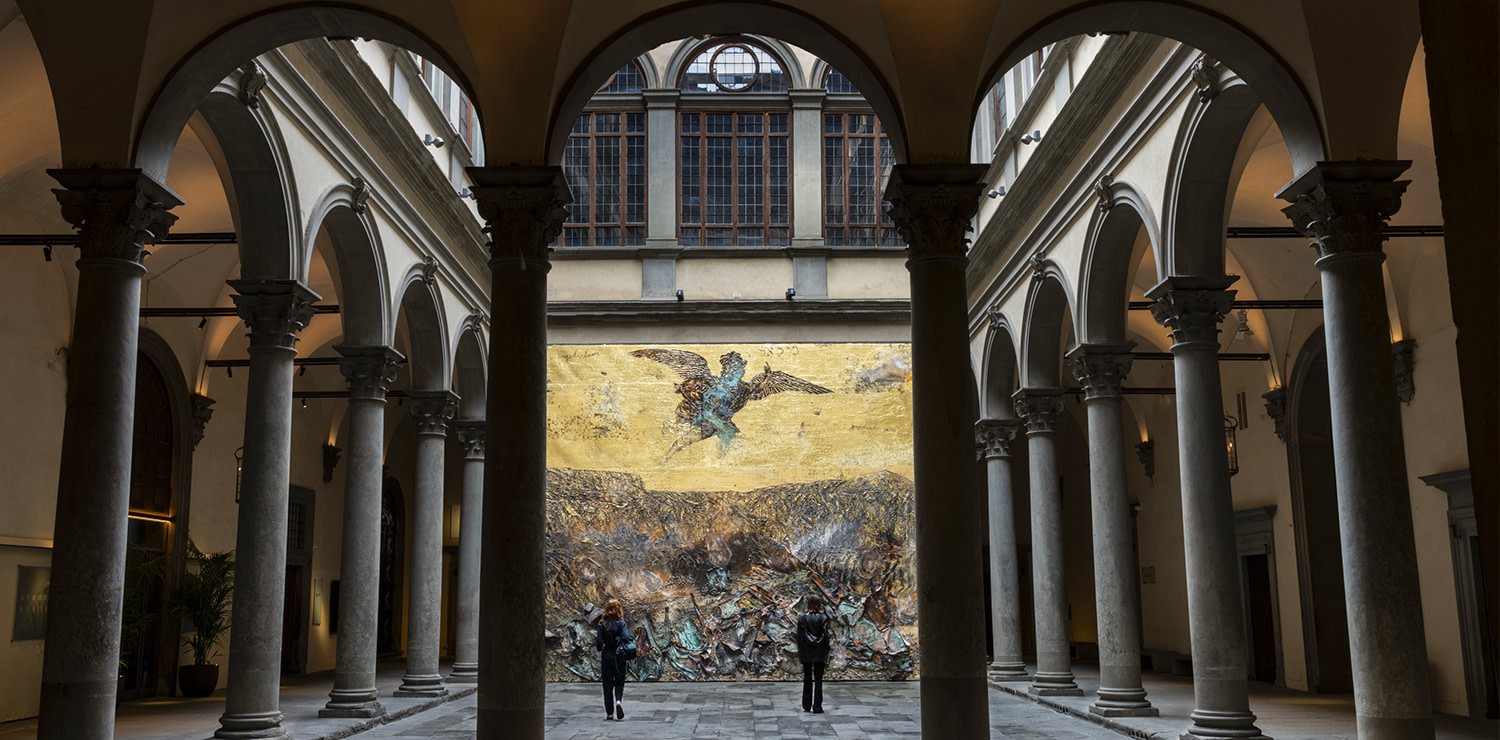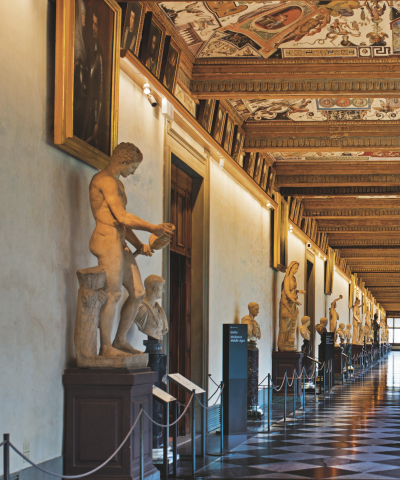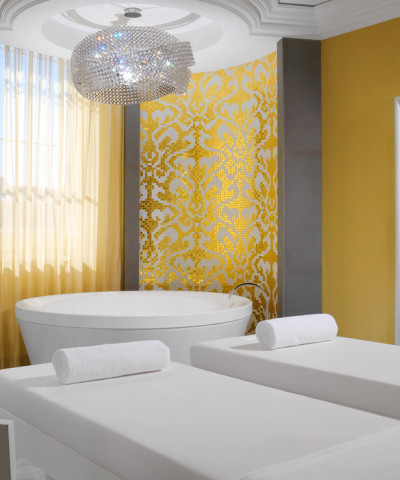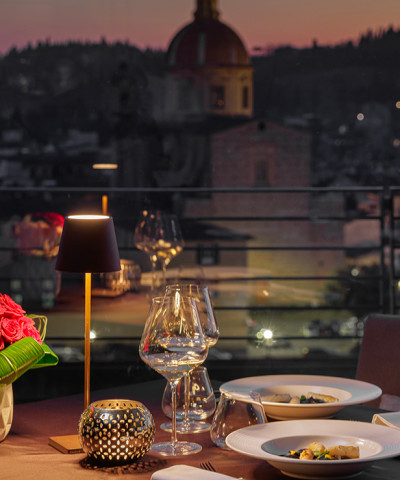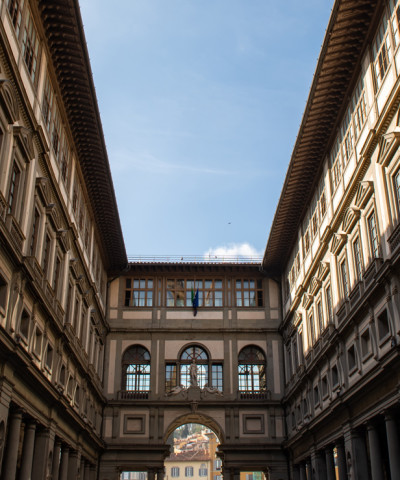Anselm Kiefer. Angeli caduti at Palazzo Strozzi
Until July 21 in Florence a major new exhibition conceived and realized together with one of the most important artists between the 20th and 21st centuries
“My relationship with the Strozzi is very special because when I first came to Florence - I would have been about 17, I’d need to check my diary, which I’ve been writing every day for ever - I wrote about Palazzo Strozzi; I don’t know why, in those days I didn’t wonder why. But, perhaps because it’s so ‘minimal’, it’s one of my favourite buildings in the world”. These words from Anselm Kiefer serve as an introduction to his magnificent exhibition at Palazzo Strozzi until July 21 this year. Fallen Angels, curated by Arturo Galansino, General Director of Fondazione Palazzo Strozzi, is an opportunity to deepen our understanding of the German artist, renowned for his detailed and layered research into memory, myth, history, literature and philosophy. The fallen angels of the title are those cast out of Heaven for their rebellion against God. This symbolic image - which imbues the Palazzo’s courtyard with the large canvas Engeissturz (Fall of the Angel, 2022-2023), a representation of humanity as a whole - becomes the starting point for the exhibition at Palazzo Strozzi: a journey among allegories, figures and forms that reflect on identity, poetry, historical events and a range of philosophical views.
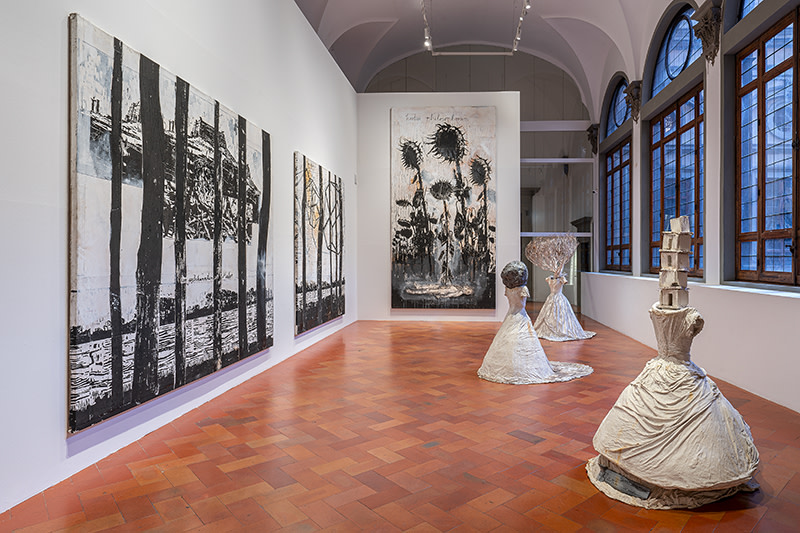 “Anselm Kiefer. Angeli caduti”, Palazzo Strozzi. Photo Ela Bialkowska, OKNO Studio Ⓒ Anselm Kiefer.
“Anselm Kiefer. Angeli caduti”, Palazzo Strozzi. Photo Ela Bialkowska, OKNO Studio Ⓒ Anselm Kiefer.Every one of Kiefer’s works expresses a refusal to accept limits, not only in terms of scale or substance, but also in the depth of thinking communicated through his art. Kiefer made his debut on the German art scene in the late 60s with works that signalled one of the first reflections on the Second World War and Germany’s emotional and cultural legacy. “At Palazzo Strozzi”, says Arturo Galansino, “his works are placed in dialogue with Renaissance architecture, amplifying the stratification of their meaning around subjects like memory, history and war. The exhibition becomes an invitation to all visitors to explore the complexity of life in the past, present and future, and the dialectic between spirituality and substance”. Through 25 historical and recent works, including an immersive piece consisting of 60 canvases of different sizes, the exhibition allows visitors to explore the variegated practice of an artist who embraces painting, sculpture, installation and photography.
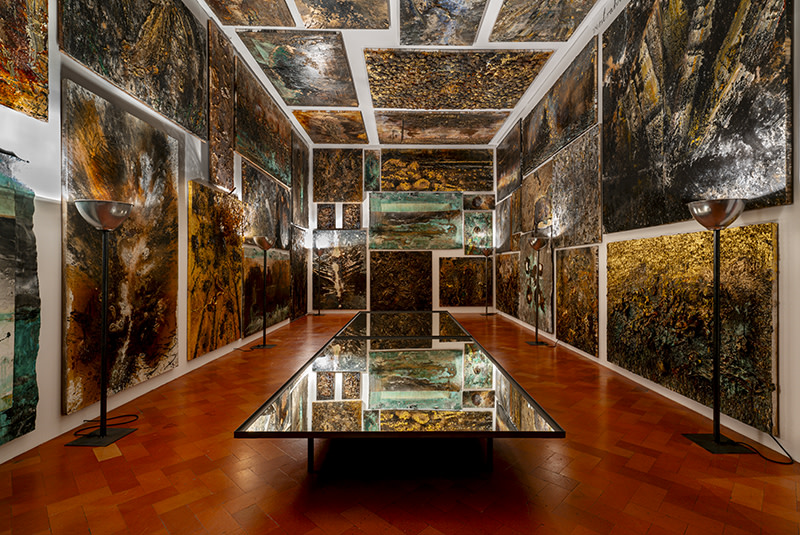 “Anselm Kiefer. Angeli caduti”, Palazzo Strozzi. Photo Ela Bialkowska, OKNO Studio Ⓒ Anselm Kiefer
“Anselm Kiefer. Angeli caduti”, Palazzo Strozzi. Photo Ela Bialkowska, OKNO Studio Ⓒ Anselm KieferIndeed, Fallen Angels opens with the famous verses from the Book of Revelation describing the fight between the Archangel Michael and the rebel angels, a metaphor for the struggle between Good and Evil. On the piano nobile the theme of fallen angels appears in the first room with the monumental painting Luzifer (2012-2023). Kiefer depicts the rebel angel plunging into the abyss, interpreted in materials that touch on recent and contemporary history. A sharp and threatening aeroplane wing made of lead protrudes from a mass of material, creating a direct reference to war, a recurring theme in Kiefer’s work.
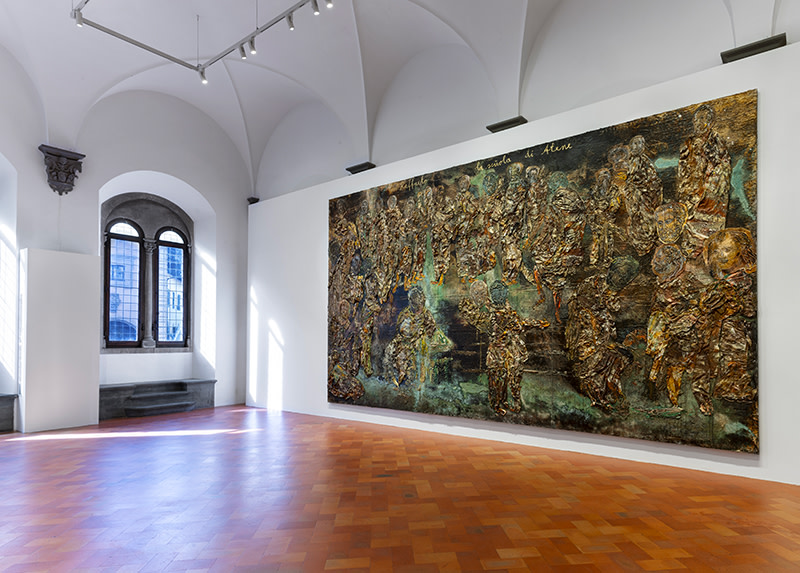 “Anselm Kiefer. Angeli caduti”, Palazzo Strozzi. Photo Ela Bialkowska, OKNO Studio Ⓒ Anselm Kiefer
“Anselm Kiefer. Angeli caduti”, Palazzo Strozzi. Photo Ela Bialkowska, OKNO Studio Ⓒ Anselm KieferThe central rooms of the exhibition contain a series of display cases, a device used by the artist since the late 80s, creating microcosms in which he places materials and objects linked by handwritten notes. The glass cases create a protected and controlled atmosphere in which the materials contained can exist in their own space. At the same time, they reinforce the mood of alienation and isolation present in Kiefer’s work. The exhibition continues with the immersive installation Verstrahite Bilder (Irradiated Paintings, 1983-2023), consisting of 60 canvases that completely cover the walls and ceiling of one of Palazzo Strozzi’s largest rooms. Created specifically for the exhibition and also featuring large mirrored surfaces in the centre of the room, the installation invites visitors to immerse themselves in Kiefer’s layered and all-embracing art.
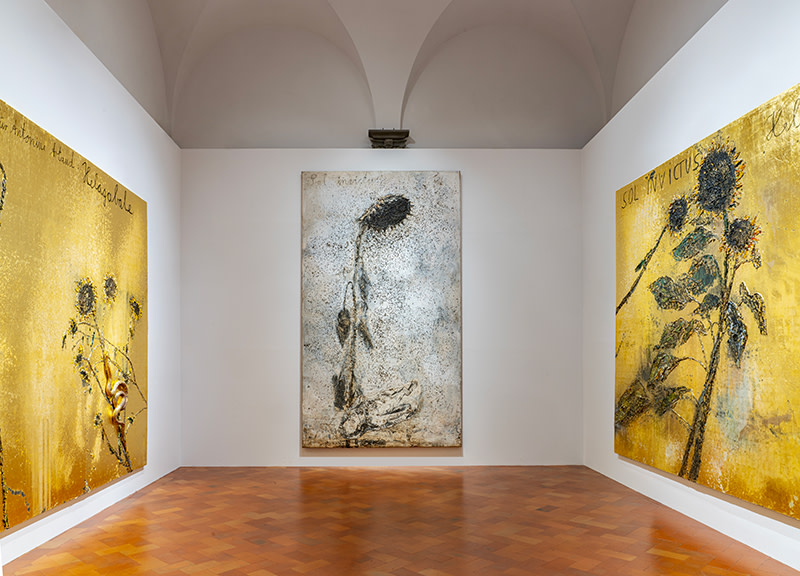 “Anselm Kiefer. Angeli caduti”, Palazzo Strozzi. Photo Ela Bialkowska, OKNO Studio Ⓒ Anselm Kiefer.
“Anselm Kiefer. Angeli caduti”, Palazzo Strozzi. Photo Ela Bialkowska, OKNO Studio Ⓒ Anselm Kiefer.The use of what he calls irradiated paintings, stripped and discoloured by radiation, adds an evocative and melancholy dimension to the installation, encouraging reflection on the fragility of life and the power of art. In the artist’s view, “Destruction is a way of making art”. The exhibition concludes with the celebrated lines written in 1930 by the poet Salvatore Quasimodo and written on a wall by Kiefer himself: “Ognuno sta solo sul cuor della terra / trafitto da un raggio di sole / ed è subito sera” [Everyone stands alone at the heart of the world / pierced by a ray of sunlight / and suddenly it’s evening]”.






